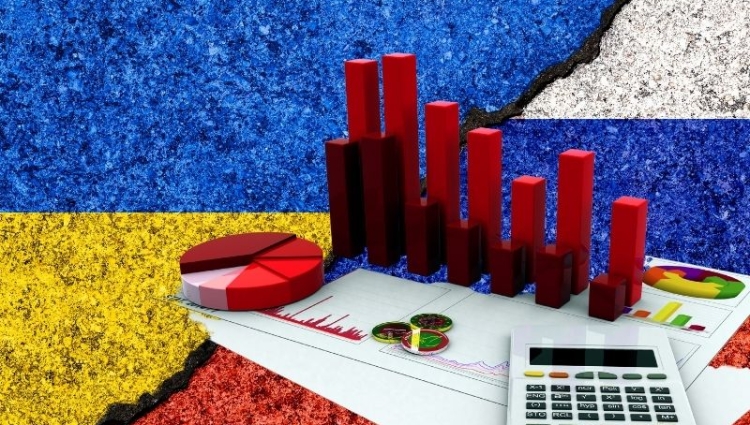Global insurance losses caused by Russia-Ukraine Cost: The cost of war could be between $16 billion and $35 billion.
Global insurance losses from the Russia-Ukraine war could be anywhere from $16 billion to $35 billion, according to a report from S&P Global Ratings. Reinsurers are expected to take on 50% of those claims.
Recent news stories have focused on the industry's exposure to leased jets that have been confiscated and grounded in Russia. Other specialty lines, such as trade credit, political risk (contract failure, agriculture, and commodities), cyber, political violence, and marine hull war, are also at risk, said S&P, which rates credit risk.
Market leaders say that the ongoing conflict will have a big impact on the market in 2022. We agree with them. Specialist lines will be the most at risk, and aviation will be the hardest hit, said S&P in its report on the "Russia-Ukraine Conflict."
That's what happened this week. The world's biggest plane-leasing company said it had filed a $3.5 billion claim with its insurance company.
There could be a total claim of $16 billion to $35 billion, and aviation losses could be anywhere from $6 billion to $15 billion, according to the report. There will be a lot of legal wrangling in courts and a lot of time to settle.
A New Jersey court recently ruled in favor of the U.S. pharmaceutical company Merck & Co. for a $1.4 billion claim against its insurers under its all-risk property insurance policy, which was taken out after the 2017 NotPetya cyber attack. S & P used this example as a point of comparison.
According to S&P, global reinsurers are likely to take on about one-half of the possible specialty insurance losses from the Russia-Ukraine war. This would be an earnings event for most reinsurers and a capital event for a few exceptions.
S & P looked at three different scenarios to come up with its estimates.
Scenario 1: This is the first one.
Under Scenario 1, S & P calculates a total loss of $16 billion, which includes $6 billion in global insured aviation losses and $10 billion in losses from other specialty lines of business. It looks like the top 21 global reinsurers, as ranked by S&P, will likely hold half of that amount. See below for S & P's list of the top 21 reinsurers, which you can see here.
S & P looked into its aviation loss calculations and said that this assumption in Scenario 1 is based on reports that only 78 of the 515 planes leased to Russian airlines have been recovered.
From talking to people in the market, we know that the value of all 515 planes is about $12 billion "S&P said, however, that the insured loss is likely to be lower because of the 78 planes that were found.
" There may be court decisions in the future that don't think the highest sums of money and coverage will be insured or paid.
Scenario 2: This is the second one.
Under Scenario 2, S & P comes up with a higher figure for aviation and specialty lines' losses of $27 billion, which comes out to $12 billion and $15 billion for each. When it comes to that amount, the top 21 global reinsurers are likely to hold about half of it.
It took into account "the appraised insured value of the 515 aircraft, that most policies are not cancellable, and that a majority of potential court decisions would favor lessors over insurers in terms of the sums at risk," S&P said.
Scenario 3: This is the third one.
It's called Scenario 3. Under this scenario, the total losses for aviation and specialty lines are $35 billion, which would be $15 billion in insured losses for aviation and about $20 billion in losses for other lines of business. The top 21 global reinsurers could be on the hook for half of that amount, but it's not clear yet.
S & P said that when it comes to aviation, its assumption shows "even higher losses than the insured value."
Report: This is because there could be a lot of unknowns about how much a policy is worth. It also assumes that most policies aren't cancellable; this is because, for example, the insured event could be classified as theft instead of war.
A lot of doubts
According to the report, these three scenarios have a lot of unknowns, but they can give an idea of how much risk the global insurance industry could face and how much of that risk could be taken on by the top 21 global reinsurers, the report said.
S&P, on the other hand, said that the reinsurance industry's annual pre-tax profit of about $22.5 billion and its natural disaster budget of about $13 billion should be enough to cover these losses.
If a few reinsurers have a lot of aviation business or have had a lot of losses from the Russia-Ukraine conflict, it could be a very big deal for them!




 And then Add to Home Screen.
And then Add to Home Screen.